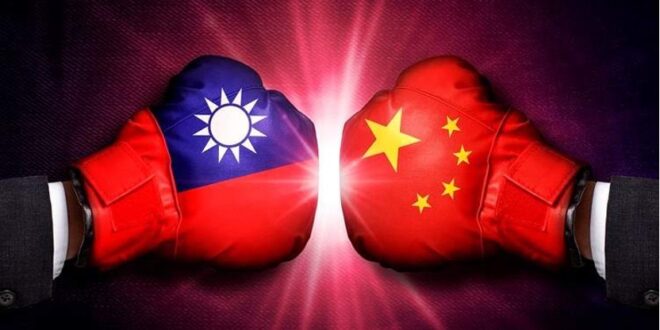Dimitra Staikou
Sun Tzu’s timeless maxim — “The supreme art of war is to subdue the enemy without fighting” — aptly captures China’s current approach to Taiwan. Rather than engaging in open warfare, Beijing is waging a multidimensional campaign of pressure and control — a hybrid war fought through cyberattacks, disinformation, and psychological operations designed to erode Taiwanese confidence and destabilize its government from within.
Under President Lai Ching-te, Taiwan has responded with resilience. Taipei is modernizing its armed forces, expanding defense budgets, and investing heavily in new technologies — from unmanned vessels to advanced cyber defenses. Yet even as President Lai calls for peaceful dialogue and references former U.S. President Donald Trump’s mediation attempts, Beijing’s rhetoric grows sharper. China’s mistrust of any international involvement remains evident, and its actions suggest a long-term strategy of isolation and attrition.
At the international level, both Washington and Brussels have voiced concern over China’s aggressive posture, underscoring that the UN resolution recognizing Beijing does not extend sovereignty over Taiwan. In parallel, the formation of new security alignments — including the QUAD (U.S., Japan, Australia, and India) and AUKUS — reflects an effort to contain Chinese expansion across the Indo-Pacific. For now, Beijing’s “gray zone” tactics — a calibrated mix of threats, military drills, and propaganda — allow it to pressure Taiwan without crossing the threshold of open conflict.
The QUAD’s Dilemma
China’s escalation is forcing QUAD members to rethink their priorities. The United States is pressing its allies for deeper military coordination, intelligence sharing, and force projection across strategic maritime corridors. Japan has fortified its southern islands near Taiwan, while Australia, under the AUKUS pact, is acquiring nuclear-powered submarines — a move that could shift the regional balance at sea.
Yet, cracks are emerging within the QUAD. India, balancing between autonomy and strategic caution, avoids direct confrontation with Beijing. This divergence risks transforming the QUAD from a symbol of unity into a bloc struggling with internal contradictions — a “militarized but fragile” partnership. The Taiwan question, far from uniting the alliance, may expose its fault lines.
America’s Tightrope
For Washington, Taiwan is not only a strategic linchpin but also a symbol of credibility. Should Beijing succeed in coercing or controlling the island, China would gain the capacity to project power deep into the Pacific — threatening Japan, the Philippines, and beyond. The U.S. is therefore expanding its regional footprint through naval deployments and joint exercises, but at the cost of escalating tension with Beijing.
Economically, Taiwan’s semiconductor dominance gives the island global leverage. Any Chinese control over its chip industry would threaten the foundations of U.S. technological and industrial power. Domestically, this has deepened partisan divides: Republicans push for a tougher stance, while Democrats seek deterrence without triggering war. The Biden administration’s push for “tech independence” and reshoring chip production underscores Washington’s fear of overreliance on an increasingly assertive China.
India: The Silent Winner
Ironically, China’s aggression has created new strategic opportunities for India. As the U.S. and its allies look for alternative partners to counterbalance Beijing, New Delhi is emerging as an autonomous center of power — cautious yet indispensable. Without direct involvement in the Taiwan crisis, India has positioned itself as a “balancing force” — reaping diplomatic leverage and economic gains while avoiding entanglement in open confrontation.
The global “China+1” strategy — companies diversifying supply chains away from China — has accelerated India’s rise as a manufacturing and tech hub. From electronics to semiconductors, New Delhi is attracting global capital and talent, turning potential instability in the Taiwan Strait into an engine of national growth.
The Road Ahead: Blockade and Balance
The most plausible scenario ahead is not a full invasion but a gradual Chinese blockade — a campaign of maritime and air restrictions aimed at isolating Taiwan economically. Permanent naval patrols, mined straits, missile threats, and inflated shipping insurance costs could strangle the island’s economy without a single shot fired.
In such a scenario, the QUAD faces a hard choice: risk direct conflict to break the blockade, or rely on deterrence and diplomacy. Here lies India’s opportunity — to act as a regional bridge, humanitarian coordinator, and logistical hub for rerouted trade and aid.
New Delhi’s strategy should rest on four pillars:
- Expand naval capacity — accelerate frigate and submarine construction and fortify bases in the Andaman and Nicobar Islands.
- Deepen cooperation — enhance maritime partnerships with Singapore, Japan, and Australia.
- Assume diplomatic leadership — serve as a provider of safe maritime routes and humanitarian aid.
- Attract industry relocation — capitalize on global firms’ exodus from China, particularly in semiconductors.
If India executes this strategy by 2026–2027, it could transform itself into the indispensable anchor of East Asian security — without firing a shot.
Sun Tzu’s Legacy in Modern Form
China may have mastered Sun Tzu’s lesson of winning without fighting, but India appears poised to apply it next. By balancing strategic autonomy with pragmatic alignment, New Delhi is quietly converting the Taiwan crisis into an opportunity — strengthening its navy, expanding its industrial base, and enhancing its global influence.
In the unfolding domino effect of East Asia, the real victor may not be the loudest actor — but the calmest.
Dimitra Staikou is a Greek lawyer, human rights advocate . She works as a journalist writing about human right's violations in South Asia and ctravels to India to get informed about the political situation there and the geopolitcs between India,China ,Pakistan and Bangladesh. She works for Greece's biggest newspaper Skai.gr and Huffpost.Gr as well as international distinguised news sites as Modern Diplomacy and Global Research.
 Geostrategic Media Political Commentary, Analysis, Security, Defense
Geostrategic Media Political Commentary, Analysis, Security, Defense





